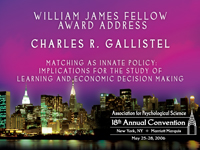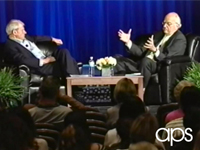Freedom and Choice, Culture and Class
Ask for a cup of coffee in Starbucks and you’ll face a seemingly infinite number of choices: tall, soy, java chip frappuccino, extra-hot, half-caf. Shop for jeans at the Gap and you’ll face endless walls of them: long, lean, drop-waist, distressed denim, short cuffed. Thirst for an orange juice — but would that be orange banana, extra-pulp, no pulp, vitamin C-infused?
America is erupting with choices. In consumer goods, politics, and media the word “choice” is equated with freedom, in particular having the freedom to live the life you want, and the more choices you have, the more freedom. But this shouldn’t be surprising. Doesn’t freedom universally mean having the opportunity to choose what we want?
No, according to recent research. In many cultural contexts outside the US, freedom does not equal choice. Moreover, most Americans do not equate freedom with having more choice.
“We misunderstand behavior if we assume that the choice-freedom link is central to agency everywhere,” said Hazel Markus, Stanford University. “In psychology, we are still missing the culture boat.”
In her invited talk at the APS 18th Annual Convention, “It’s a Free Country: Social Class, Agency and Choice,” Markus presented evidence supporting the idea that choice is not the definition of freedom for most Americans. Nor is it any sort of universal definition.
The culture boat she speaks of is tied to different models of agency, which are implicit guides of how to be that guide action. Many psychologists assume middle class America follows a “disjoint model of agency.” This model includes ideas such as: “I’m independent, free to choose, and in control” and the many everyday practices like getting a cup of coffee that reflect and promote these ideas about how to be an appropriate person.
In psychology, this model is so pervasive that Markus wants to remind everyone that it has no base in biology or evolution, but rather is culture-specific.
“We look out there, and think we are seeing the way human nature is,” she says, “but in fact in other contexts, other ideas of agency are prevalent.”
In recent studies, there is evidence that while choice and individuality are central to American cultural contexts, different ideas about the right way to be are prevalent in other cultural contexts.
When experimenters asked American and Indian students at Stanford University to choose one pen from a set of five – where in one condition four pens were red and one was blue – they found that Americans consistently chose the unique pen. The Indian students, however, chose in an opposite way, going for the common red pen.
In a later study the experimenter took away the pen at the very moment the student made their choice, saying, “No, actually you can’t have that pen. Here take this one instead.” The experimenter then asked each student to try out the given pen and rate it.
Here, too, the groups performed differently. Americans strongly preferred the pens they freely chose to pens chosen for them.
“Taking away their choice threatens their freedom,” Markus said. “And so they devalued the pen the experimenter gave them.”
Indian students showed no preference for either pen regardless of whether they were free to choose or not. Then Markus and her colleagues applied this same pen test to two groups within the American context: the middle class and the working class. Like the Indian students, participants in working class contexts (defined by having a high school education only) consistently chose the majority pen. Additionally they showed no preference for a pen that was chosen by them or by the experimenter.
Participants in middle class contexts, however, markedly preferred the unique pen and the pen they chose for themselves.
So within the working class contexts, there seems to be a different kind of agency at work. This different model has remained largely unstudied, Markus said, but includes ideas and practices that emphasize personal integrity, stability, and consistency She noted that in working class contexts, there is relatively more emphasis on family, solidarity and community.
Values among the middle class are much more individualistic, having to do with choice, control, and self- expression. This group has presumably taken care of other basic freedoms – such as freedom from want or fear– and is able to narrow their definition. They focus on the freedom equals choice link. The proliferation of choice in mainstream media and consumer advertising — mostly intended to target the middle class – is also expressed in many public policy campaigns. It is here where Markus thinks there is a danger in assuming that everyone automatically perceives choice as a good thing.
Public campaigns can unintentionally promote the idea that choice, in its own right, is a good thing regardless of whether the message is understood by its intended audience, or if the choices proffered are indeed good ones.
Markus presented a large bright pink Planned Parenthood poster with the words, “Stand up for choice!” This message is unlikely to appeal to the working class woman in the same way it does to the middle class woman. To draw the interest of a working class audience, the message might be more effective if it said, “A decision that affects the whole family.”
“The notion that freedom and choice are context-specific is under the radar,” Markus said. “If we can reveal these models, explain their origins and their workings, we will have a clearer understanding of our own American contexts and how they shape agency.”




Comments
It’s been my observation that the working class talk freedom but act with conformity.
APS regularly opens certain online articles for discussion on our website. Effective February 2021, you must be a logged-in APS member to post comments. By posting a comment, you agree to our Community Guidelines and the display of your profile information, including your name and affiliation. Any opinions, findings, conclusions, or recommendations present in article comments are those of the writers and do not necessarily reflect the views of APS or the article’s author. For more information, please see our Community Guidelines.
Please login with your APS account to comment.